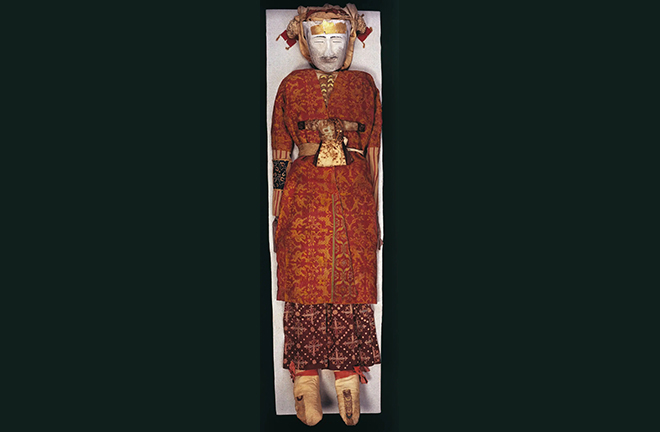Yingpan site

FILE PHOTO: The dress [post-restoration] of the tomb occupant of M15 at Yingpan site
The Yingpan site, located in Yuli County, Xinjiang Uygur Autonomous Region, comprises a circular layout of ancient city ruins and hosts hundreds of ancient tombs, making it one of the largest tomb clusters in the Lop Nor region to date.
In the beginning of the 4th century, Yingpan served as a major city on the central route of the Silk Road. This city flourished during the Han and Jin periods. After the era of the Northern and Southern Dynasties, the Silk Road trade routes underwent a significant shift. Consequently, Yingpan ancient city gradually lost its glory.
The Yingpan site contained a diverse array of artifacts, with silk textiles standing out for their astonishing variety and exquisite quality. The tomb occupant of Tomb M15 was an adult male, with a height of between 1.8-1.9 meters, wearing a hemp mask adorned with gold. He was dressed in an exotic-style robe, and wearing woolen shoes. A silk belt wrapped around his waist, from which hung a silk sachet and a silk fish, with a tiny silk burial suit placed on his chest and left wrist, and his head resting on an embroidered pillow adorned with pearls at the corners. The identity of the tomb occupant remains uncertain. The presence of many exotic burial goods of different styles in M15 indicates the tomb occupant’s distinguished status and the unobstructed trade on the Silk Road at that time.
Edited by REN GUANHONG

 PRINT
PRINT CLOSE
CLOSE